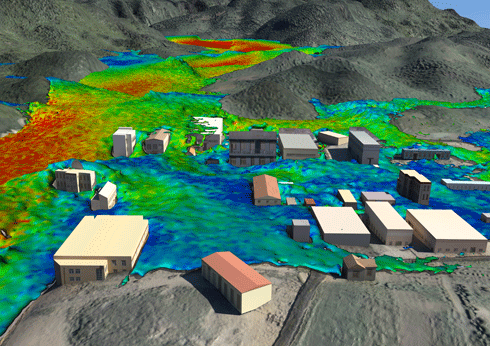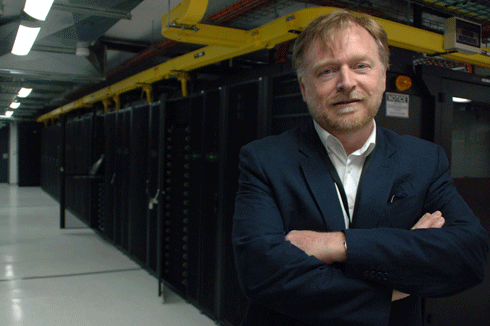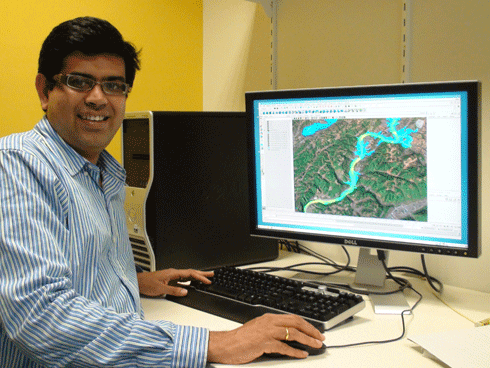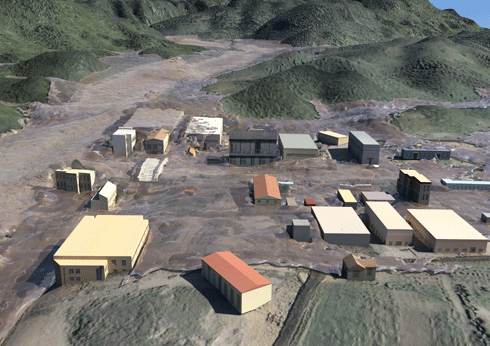
|
Published: 16 April 2012
Green shoots from brownfield roots
While brownfield sites present many challenges for developers, they may be the key to sustainable growth in the face of intense population pressures on our cities.
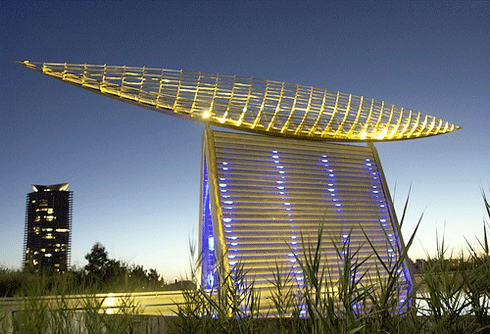
|
|
Melbourne's Docklands precinct was developed on a brownfield site. This urban art piece (Reed Vessel by Virginia King), in Docklands Park straddles a pool integrated into the wetlands of the 3-hectare park. Rainwater is collected in a series of three wetlands, then stored underground for use in parkland irrigation. Annual water savings are estimated to be up to 10 million litres. Credit: Steve Hubbard
|
Brownfield sites – abandoned or underused industrial and commercial sites – are relics of our past, the legacy of Australia's post-war manufacturing boom and our past history as an exporter.
The decline of manufacturing competitiveness and changes in the use and value of land have left a number of brownfield ‘scars’ across our cities and suburbs. Tackling these challenging sites, and consolidating the opportunities presented, will be key to the prosperity of our cities and their economies.
Australia’s population is projected to reach 35 million by mid-century. Over 70 per cent of the growth is expected to be accommodated by our capital cities.1 Developing brownfield sites to meet the demand for land can present technical and stakeholder complexities that challenge the commercial attractiveness of development.
However, greenfield development also comes at a cost, for different reasons – new infrastructure. Brownfield development, which uses existing infrastructure, can typically save 50 per cent of the development cost of greenfields. This economic efficiency could free up funding for other policy goals, including health and education.
To balance greenfield and brownfield development and limit urban sprawl, many cities are setting targets to guide development. Sydney’s City of cities: A plan for Sydney’s future2 sets a nominal target of 70 per cent infill to 30 per cent greenfield. However, despite a strong strategic and economic rationale, the rates of infill – the term ‘infill’ encompasses sites formerly used for residential purposes – and brownfield development have struggled to keep pace with demand.
Despite the challenges, the development of brownfield sites provides an opportunity to remodel our cities. The provision of green spaces, biodiversity corridors and communal gardens – particularly when done with a master plan that optimises the redevelopment of brown- and consolidated grey-fields3 (middle residential suburbs) – could provide opportunities to reclaim land for other ecosystem services and/or local food production on soils more suitable than for housing.
The scale of some of our capital city inner urban redevelopment sites has led to them being touted as eco-suburbs. These projects include the ‘e-gate’ precinct in Melbourne’s central railyard areas, the City Link area in central Perth, and the high profile Barangaroo redevelopment on the western edge of Sydney’s CBD.
The scale of these precincts also facilitates use of technologies that may not be feasible on a smaller scale. Trigeneration (trigen) is a form of localised energy production: gas-fired units generate electricity and deliver it locally, avoiding some of the high costs of transmission. The heat from electricity production is captured and used to heat and cool buildings and waste heat is converted to chilled water for air-conditioning and refrigeration. Trigen systems are more than twice as energy-efficient than a coal-fired power station and emit less than half the greenhouse gas emissions.
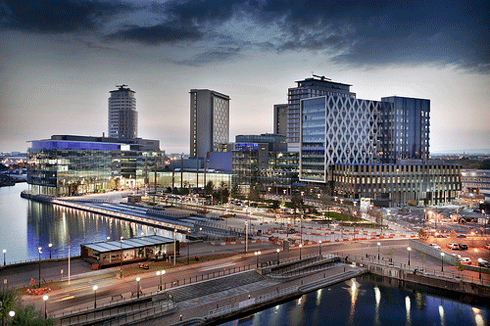
|
|
MediaCity in Manchester in the United Kingdom is a hub for creative and digital services. Credit: University of Salford
|
Precinct-wide trigen is part of the MediaCityUK development, a new hub for creative and digital services in Manchester in the United Kingdom. At Wembley City, a residential, leisure and shopping complex being built around the new Wembley sports stadium north-west of central London, underground waste vacuum systems that use suction pipes to transfer waste to a central treatment plant have been installed. Water-sensitive design is a feature of Melbourne’s Docklands development.
Development at this scale also enables a mix of land-use types to be incorporated into a precinct, including shared public space, which contributes to community vibrancy.
Capitalising on these opportunities will require tackling the key challenges. Innovative approaches such as the brownfield sustainability pilots, brokered by the USA’s Environmental Protection Authority, provide grants and technical and regulatory support to help overcome barriers such as the cost and risk of managing contamination.
Navigating the complex web of stakeholder interest is at the heart of the challenge. Local communities have strong opinions about the fate of brownfield sites, as do regulators, local councils and developers, and all have differing interests. Commercial and industrial land-use priorities compete with residential demands, and locations that provide access to a skilled workforce and necessary infrastructure are in high demand.
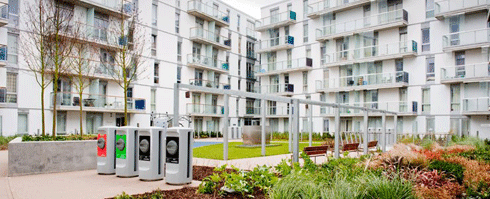
|
|
Vacuum waste inlets, Wembley City, UK. Vacuum waste systems use suction pipes to transfer waste to a central treatment plant. The scale of Wembley City facilitates use of technologies such as this that may not be feasible on a smaller scale. Credit: Envac Group
|
Given these challenges, we may need different commercial models to incentivise appropriate development that recognises whole-of-life costs and benefits. We may also need different ways of achieving collaboration along the supply chain, to avoid setbacks arising from the separation of functions among multiple agencies and authorities, which characterises urban development projects.
Our cities are already feeling the strain of population growth. It is clear that a ‘business as usual’ approach will not meet the challenge of accommodating the future needs of our growing cities. Developing transition pathways is important to make sustainable growth achievable, step by step.
Science will help us understand how best to create and implement those transition pathways, recognising they are complex and involve many stakeholders. We also need good real-world examples that are attractive to people and demonstrate what is possible. Brownfields may be relics of our past, but a prosperous future will require grasping the opportunities they present.
Dr Nick Fleming is Chief Sustainability Officer at Sinclair Knight Merz, leading the application of sustainability thinking in business operations and client services. Through his Sustainable Enterprise column, Nick provides insight into how businesses and organisations are effectively putting sustainability theory into practice.
1 Infrastructure Australia (2010). State of Australian cities 2010. Major Cities Unit, Infrastructure Australia, Canberra. http://www.infrastructure.gov.au/infrastructure/mcu/soac.aspx
2 NSW Department of Planning (2005). City of cities – a plan for Sydney’s future: the metropolitan strategy. NSW Department of Planning.
3 Peter Newton (2010). Beyond greenfields and brownfields: the challenge of regenerating Australia’s greyfield suburbs. Built Environment 36(1), 81–104.


